-
 +21 +1
+21 +1Why It Was Almost Impossible to Make the Blue LED
The blue LED was supposed to be impossible—until a young engineer proposed a moonshot idea.
-
 +4 +1
+4 +1The Motorized Scooter Boom That Hit a Century Before Dockless Scooters
Peter Minton was riding his motorized scooter on Rockaway Beach Boulevard when the patrolman served him with a summons to appear in traffic court. The reason: the 16-year-old was operating the vehicle without a driver’s license.
-
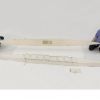 +19 +1
+19 +1Lawrence Hargrave walked on water in these shoes
These shoes were designed by Lawrence Hargrave who was one of Australia's great scientists. He produced and tested his original shoes at 20 years of age on the calm waters of Rushcutters Bay. At the time, Hargrave was working as an apprentice with the Australasian Steam Navigation Company (ASN Co). ...
-
 +8 +1
+8 +1The Oral History of the Super Soaker
Prepare to get wet for this tale of how a NASA engineer accidentally invented the greatest squirt gun ever made — and changed summertime forever
-
 +21 +1
+21 +1Superpower Glass Improves Socialization in Children with Autism
Augmented reality digital therapy solutions can be an effective way to improve the social behavior of children with autism spectrum disorder, according to a new study published in JAMA Network. Children who wore the Superpower Glass wearable technology, deployed via Google Glass, show significant improvements on the Vineland Adaptive Behaviors Scale socialization subscale compared with treatment as usual controls.
-
 +27 +1
+27 +1The Humble Brilliance of Italy's Moka Coffee Pot
In the era of pods, the iconic item has become an endangered species.
-
 +22 +1
+22 +1The US military is testing stratospheric balloons that ride the wind so they never have to come down
The idea of a balloon that floats high up above Earth indefinitely is a tantalizing one. Solar power would allow such stratospheric balloons to operate like low-cost satellites at the edge of space, where they could provide communication in remote or disaster-hit area, follow hurricanes, or monitor pollution at sea. One day, they could even take tourists on near-space trips to see the curvature of the planet.
-
 0 +1
0 +1Food preparation Modern technology
Make sure to pick a microwave that supplies you a minimum of 3 power degrees. Normally, these are High, for normal food preparation (100% power); Tool, for simmering (50% power), as well as Reduced or Defrost (typically regarding 10%-30% power).
-
 +8 +1
+8 +1Purple bacteria can turn human waste into clean hydrogen energy
The new method reduces carbon emissions and turns wastewater treatment plants into green generators. A significant downside to wastewater treatment plants is their carbon footprint. Now, researchers have found a way to reduce carbon emissions from sewage and produce hydrogen energy at the same time. Their method uses purple bacteria and electrical currents to capitalize on the organic materials we flush down the toilet every day. We spoke with one of the study’s authors, Daniel Puyol of Spain’s King Juan Carlos University, to learn more.
-
 +13 +1
+13 +1Potato spoons, pipe bots and mini wind turbines on Dyson awards list
Cutlery made from potato peelings and a robotic cleaner that can tackle pollution in rivers, lakes and canals are among the groundbreaking international designs shortlisted for the prestigious annual James Dyson award. Over half the world’s population currently live in cities, according to the United Nations – a proportion expected to rise to seven in 10 people by 2050 – and the projects share a common theme of aiming to redefine urban living through technology to create a more sustainable future.
-
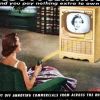 +25 +1
+25 +1Inventions and New Products from 1950 to 1979
-
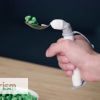 +13 +1
+13 +1The Spoon That Will Never Spill On You
This futuristic spoon will always stay level no matter what you do to it
-
 +12 +1
+12 +1Four Teenage Inventors Changing our World
Many are too young to drink, drive, or even catch an Uber – but they’re already filing patents.
-
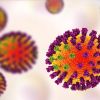 +17 +1
+17 +1This UV Lamp Could Prevent the Flu Virus From Spreading in Public Places
Researchers have developed an ultraviolet (UV) lamp that kills the influenza virus but isn’t harmful to human skin or eyes, according to a new study in Scientific Reports. They hope the technology can be commercialized and marketed to prevent the spread of seasonal flu in public places, such as schools, hospitals, and airports.
-
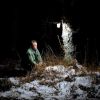 +9 +1
+9 +1The Luminiser is a lantern that uses a tea candle to power its LED light
Having a proper light source while camping or backpacking is crucial to the outdoor experience, which is why camp lanterns have always been a popular accessory to carry with us on our backcountry adventures. Those lights usually require fuel or batteries to serve as a source of energy, which can become problematic on longer excursions. But a new lantern called the Luminiser powers its internal LED lights using a unique form of energy, potentially changing the lives of those who use it.
-
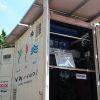 +16 +1
+16 +1Invention Generates Power, Cleans Water Using Untapped Source
Rapid, unplanned urbanization is becoming a serious threat across the world, because it puts major stress on critical infrastructure such as water and sewer lines. Building on his team’s success in India, Daniel Yeh, PhD, associate professor of Civil and Environmental Engineering at the University of South Florida College of Engineering, is the principal investigator of a two-year, $1.14 million grant from the Bill & Melinda Gates Foundation to install a new and improved version of his NEWgenerator in Durban, South Africa.
-
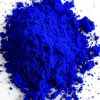 +15 +1
+15 +1First new blue discovered in 200 years is set to become beautiful new crayon.
It’s difficult to come by new colors these days, as the earth’s naturally-occurring colors have been thoroughly researched and new ones created in scientific settings are dwindling in occurrence. The last shade of blue to be discovered and named was Cobalt Blue back in 1802. Since cobalt has been found to be toxic when inhaled or ingested, its use in science has been limited and almost non-existent, though it is still used as a coloring agent for fashion items. The final name for the color will be released by the end of 2017.
-
 +18 +1
+18 +110-year-old boy invents device to prevent babies dying in hot cars
A 10-year-old boy from Texas has invented a gadget that could save the lives of young children accidentally left in hot cars. Over the last two decades, at least 712 children left in vehicles have died of heatstroke in the US, according to a meteorologist who began tracking the preventable deaths in 1998.
-
 +26 +1
+26 +1How air conditioning changed the world
Initially invented for the printing industry, the technology has transformed the way we live and work. By Tim Harford.
-
 +25 +1
+25 +1The 6 Most Surprising, Important Inventions From World War
“The deadlock on the Western Front forced armies to develop new technologies to overcome it,” says Paul Cornish, a historian at the Imperial War Museums in London. Many well-known innovations that we associate with the war today were invented to try to gain an advantage over an entrenched enemy.
Submit a link
Start a discussion




















